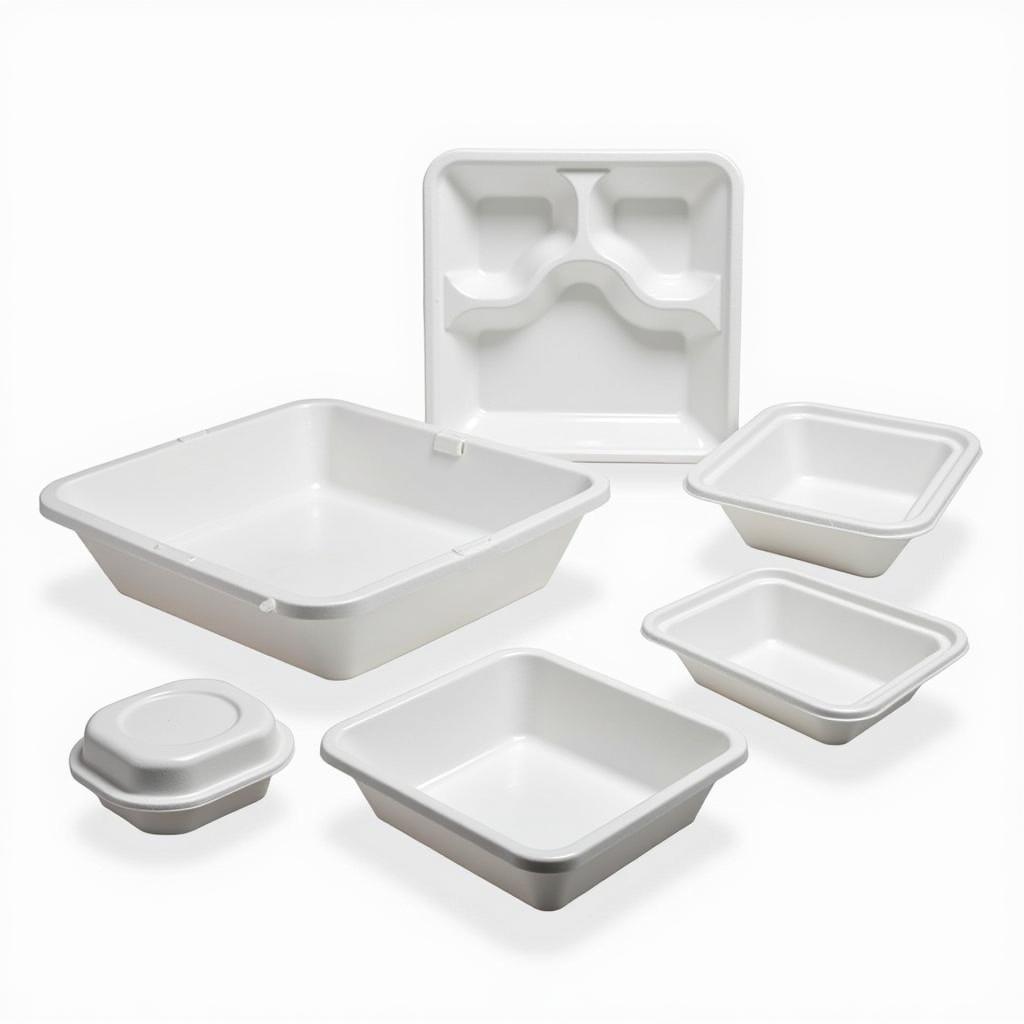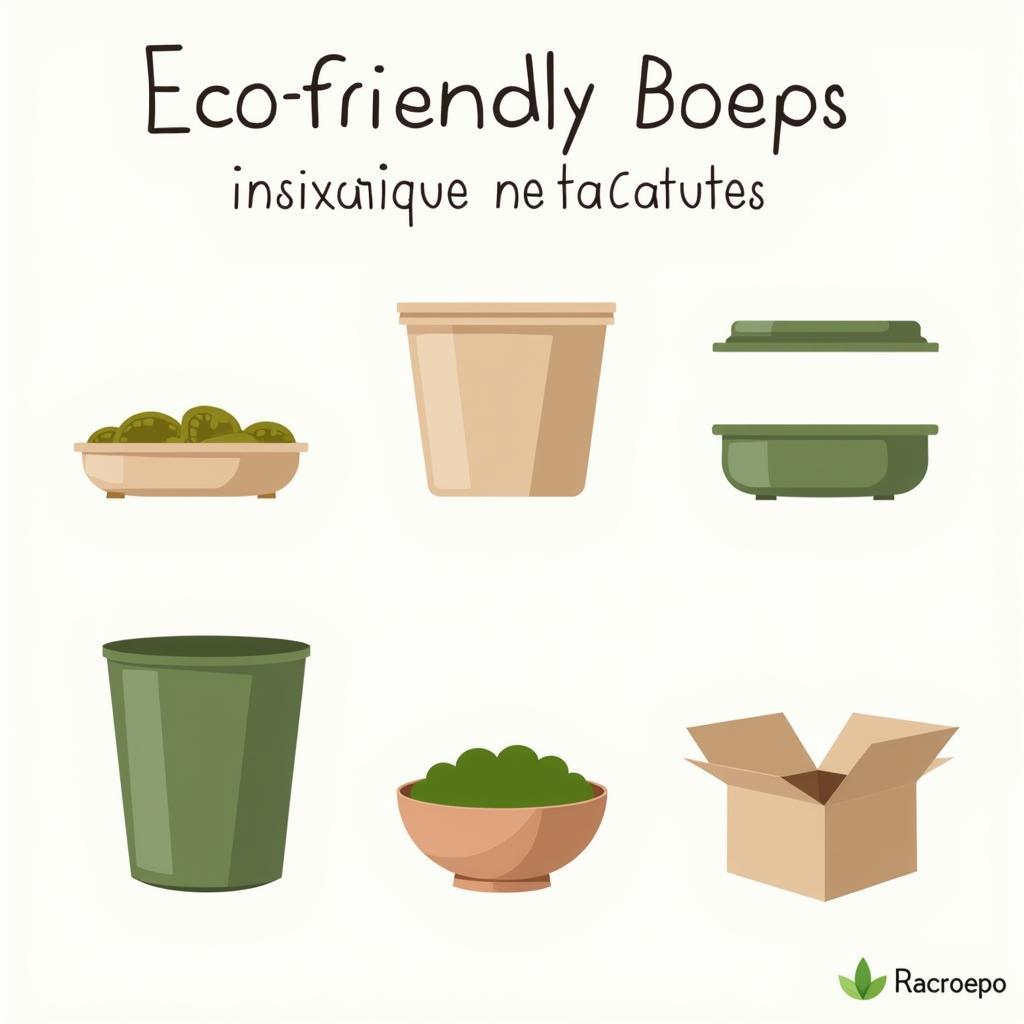Styrofoam Food Containers With Lids are a ubiquitous sight in the food industry, offering a convenient and cost-effective solution for takeout and food storage. But how much do we really know about these handy containers? From their insulating properties to their environmental impact, let’s delve deeper into the world of styrofoam food containers. We’ll explore their benefits, drawbacks, and sustainable alternatives. Head over to our page on food packaging supplies wholesale for more information.
Understanding Styrofoam Food Containers
Styrofoam, technically known as expanded polystyrene (EPS), is a lightweight, rigid plastic foam material. Its closed-cell structure makes it an excellent insulator, keeping hot food hot and cold food cold. This is a significant advantage for takeout businesses and restaurants. These containers are also lightweight and readily available, making them a practical choice for many food vendors.
What about the lids? Secure lids are essential for preventing spills and maintaining food freshness during transport. They also help to maintain the temperature of the food, which is crucial for both hot and cold items.
Benefits of Using Styrofoam Containers
Styrofoam containers offer several advantages:
- Excellent Insulation: They maintain food temperature effectively, preserving quality and taste.
- Cost-Effective: Styrofoam is a relatively inexpensive material, reducing packaging costs for businesses.
- Lightweight: This reduces shipping costs and makes them easy to handle.
- Versatile: Available in a variety of sizes and shapes to accommodate different food types.
Drawbacks of Styrofoam Containers
Despite their benefits, styrofoam containers also have drawbacks:
- Environmental Concerns: Styrofoam is not biodegradable and contributes to landfill waste.
- Potential Health Risks: Some studies suggest that styrene, a component of styrofoam, can leach into food, especially when heated.
- Not Microwave Safe: Heating styrofoam in a microwave can release harmful chemicals.
- Fragile: Can easily crack or break, potentially leading to spills.
 Variety of Styrofoam Food Containers with Lids
Variety of Styrofoam Food Containers with Lids
Exploring Sustainable Alternatives
With growing environmental awareness, many businesses are seeking sustainable alternatives to styrofoam. Options include:
- Reusable Takeaway Food Containers: A durable, eco-friendly choice for reducing waste. Check out our selection of reusable takeaway food containers.
- Biodegradable Containers: Made from plant-based materials like sugarcane or bamboo, these compostable options offer a greener solution.
- Paper-Based Containers: A recyclable alternative for dry foods and less messy items.
- Aluminum Containers: Durable and reusable, ideal for baking and storing leftovers.
“Switching to sustainable packaging is not just a trend, it’s a responsibility,” says Sarah Miller, a leading sustainability consultant. “It shows consumers that your business cares about the environment and the future.”
Are Styrofoam Food Containers with Lids Right For You?
Choosing the right food container depends on various factors, including the type of food, storage needs, and environmental priorities. While styrofoam offers cost-effectiveness and insulation, its environmental impact is a major concern.
How to Dispose of Styrofoam Containers Responsibly
If you do use styrofoam containers, it’s essential to dispose of them responsibly. While not commonly recycled curbside, some communities offer specialized recycling programs. Check with your local waste management authority for proper disposal guidelines.
 Eco-Friendly Food Container Alternatives
Eco-Friendly Food Container Alternatives
Making the Switch to Eco-Friendly Options
Transitioning to sustainable alternatives may require an initial investment, but the long-term benefits for the environment and your brand image can be significant. “Consumers are increasingly choosing businesses that prioritize sustainability,” notes David Chen, an environmental advocate. “It’s a smart business move as well as an ethical one.” For high-quality and affordable togo packaging, explore our range of togo boxes for food.
Conclusion
Styrofoam food containers with lids offer convenience and cost-effectiveness, but their environmental impact necessitates exploring sustainable alternatives. By considering the pros and cons of different options, businesses can make informed choices that benefit both their bottom line and the planet. Remember, the choice of food container is a reflection of your brand values and commitment to sustainability. Consider making the switch to a more eco-friendly option today.
FAQ
- Are styrofoam containers recyclable? Not typically in curbside recycling programs, but some specialized facilities may accept them.
- What are the best eco-friendly alternatives to styrofoam? Reusable containers, biodegradable containers, and paper-based options are great alternatives.
- Are styrofoam containers safe for hot food? Yes, but it’s best to avoid microwaving them as they can release harmful chemicals.
- What are the advantages of using styrofoam containers? They are lightweight, cost-effective, and offer excellent insulation.
- How should I dispose of styrofoam containers? Check with your local waste management authority for proper disposal guidelines.
- Why are businesses switching to sustainable food containers? Growing environmental concerns and consumer demand for eco-friendly practices are driving the shift.
- Where can I find high-quality sustainable food containers? Many suppliers offer a range of eco-friendly options.
Do you have other questions about other types of packaging materials? Check out our resources on different food packaging options to learn more.
When you need assistance, please contact Phone Number: 02437655121, Email: minacones@gmail.com or visit us at 3PGH+8R9, ĐT70A, thon Trung, Bac Tu Liem, Ha Noi, Vietnam. We have a 24/7 customer service team.